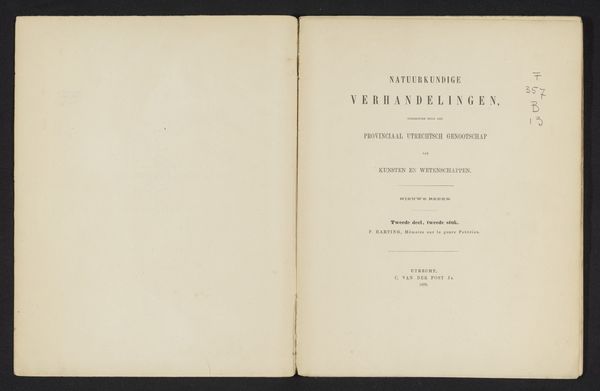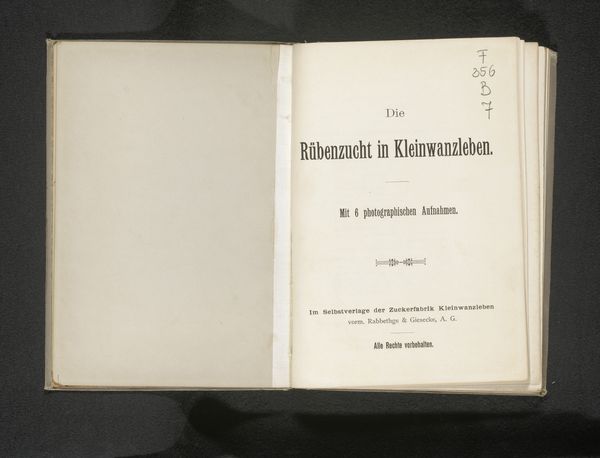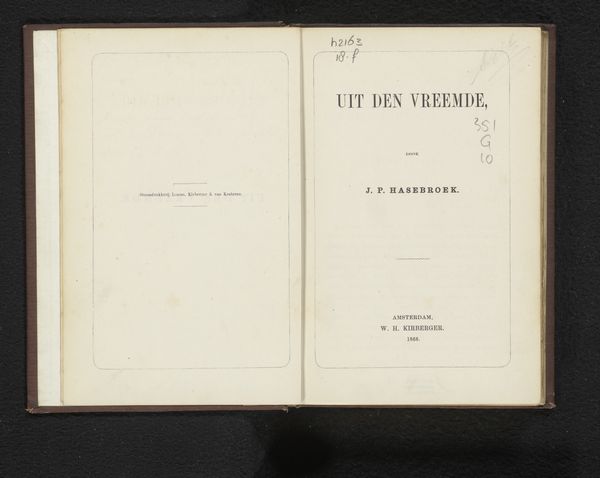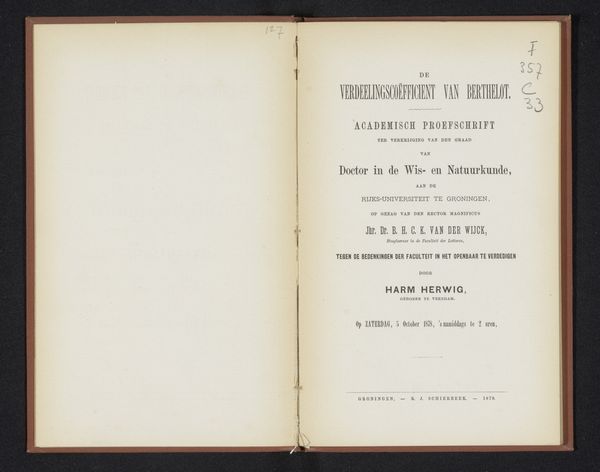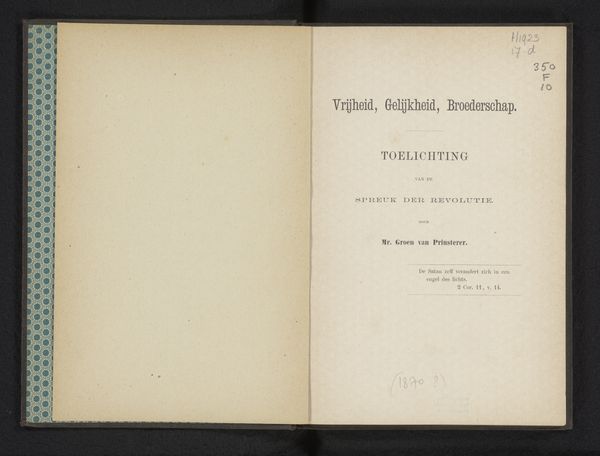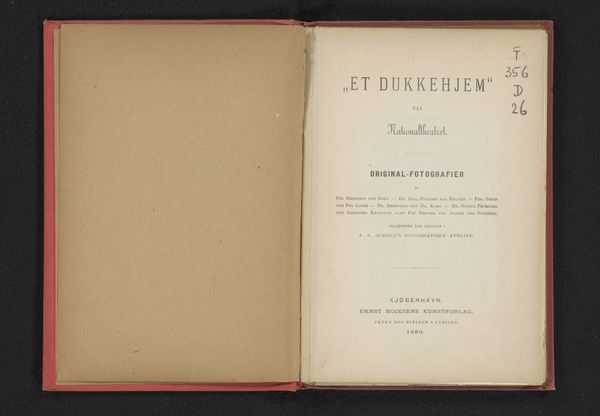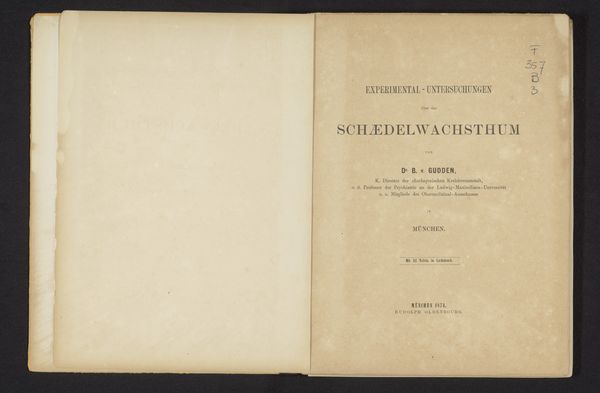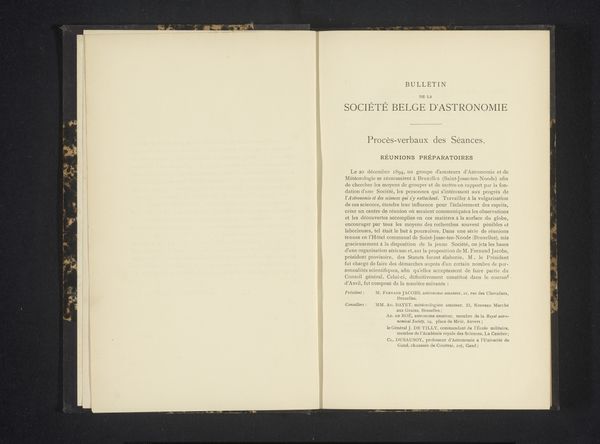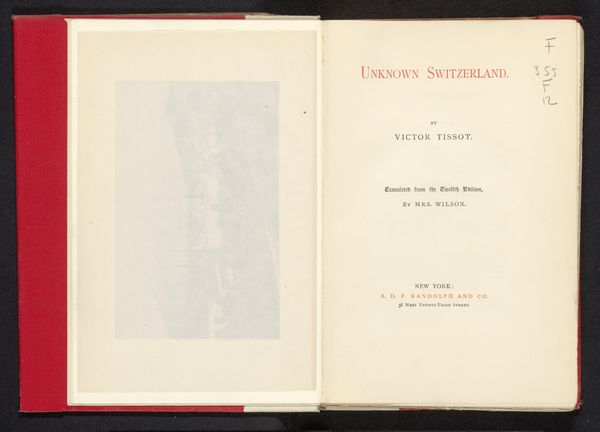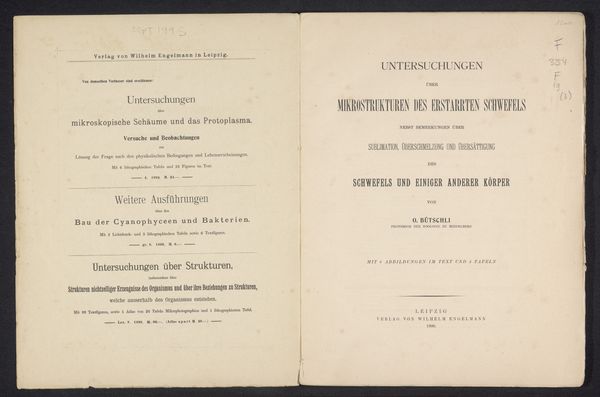
Wandeling door de zalen der historische tentoonstelling van Amsterdam / door D.C. Meijer Jr. 1876
0:00
0:00
print, paper, typography
#
aged paper
#
homemade paper
#
dutch-golden-age
#
paperlike
# print
#
paper texture
#
paper
#
typography
#
folded paper
#
thick font
#
delicate typography
#
paper medium
#
thin font
#
historical font
Dimensions: height 251 mm, width 170 mm, thickness 22 mm
Copyright: Rijks Museum: Open Domain
Editor: So, here we have "Wandeling door de zalen der historische tentoonstelling van Amsterdam," or "A Walk Through the Halls of the Historical Exhibition of Amsterdam," by D.C. Meijer Jr., from 1876. It appears to be a print on paper, perhaps a title page of a booklet. It gives me a sense of understated historical documentation; what is your read on it? Curator: I see this piece as a powerful document of its time. Consider that 1876 was a period of intense national self-reflection in many European countries, a moment for constructing narratives of identity. This "historical exhibition" becomes a stage. Editor: A stage for what exactly? Curator: A stage for constructing a specific, curated version of Dutch history. Think about whose stories are being told, and just as importantly, whose are being left out. The act of selecting and displaying these artifacts is not neutral; it's a political act. Editor: So, it’s not just about remembering the past, but shaping the present, and maybe even the future? Curator: Precisely. How do you think the act of "walking through" such an exhibition affects the viewer’s perception of Dutch identity? Are they encouraged to participate in the dominant historical narrative, or are there opportunities for critical reflection? Think about what that deliberate framing does for a still very new nation-state. Editor: I guess seeing history laid out in this way could make it seem like one inevitable story, even if that isn’t true. It highlights the power dynamics inherent in historical narratives and the choices about whose past is considered worth remembering. Thank you. Curator: And for me it highlighted the importance of critically examining seemingly straightforward historical accounts for their underlying ideologies.
Comments
No comments
Be the first to comment and join the conversation on the ultimate creative platform.
